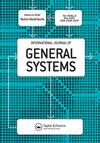不确定产量密度回归模型及其在防风林中的应用
IF 2.4
4区 计算机科学
Q2 COMPUTER SCIENCE, THEORY & METHODS
引用次数: 2
摘要
摘要鉴于现有的观察结果,回归是预测响应变量和解释变量之间关系的必要条件。一般情况下,我们假设观测到的数据是精确的,但在实际生活中,精确的观测往往很难获得,而且大多是不精确的区间数据。因此,传统的回归分析可能会导致不准确的结果。在处理不精确的观测以进行更精确的回归分析时,不确定性理论更为合适。本文将引入不确定产量密度回归模型,并用最小二乘法推导出最优参数。此外,我们提供残差分析来获得模型扰动项的分布,并使用不确定假设检验来验证扰动项的适当性。给出了模型的预测值和置信区间。此外,还将给出三个不确定产量密度回归模型的数值例子。最后,该模型将作为一个应用程序成功地应用于parsnips中。本文章由计算机程序翻译,如有差异,请以英文原文为准。
Uncertain yield-density regression model with application to parsnips
ABSTRACT Given the existing observations, regression is necessary to predict the relationship between the response variable and the explanatory variable. In general, we assume that the observed data are precise, but in actual life, precise observations are often difficult to be obtained, and most of them are imprecise interval data. As a result, the traditional regression analysis may lead to inaccurate results. When dealing with imprecise observations for more precise regression analysis, uncertainty theory is more appropriate. This paper will introduce the uncertain yield-density regression model and derive the optimal parameters by the least squares method. Besides, we provide residual analysis to obtain the distribution of the model's disturbance term and validate the appropriateness of the disturbance term using uncertain hypothesis testing. The predicted value and confidence interval for the model are also given. Moreover, three numerical examples of uncertain yield-density regression models will be given. Finally, this model will be successfully used in parsnips as an application.
求助全文
通过发布文献求助,成功后即可免费获取论文全文。
去求助
来源期刊

International Journal of General Systems
工程技术-计算机:理论方法
CiteScore
4.10
自引率
20.00%
发文量
38
审稿时长
6 months
期刊介绍:
International Journal of General Systems is a periodical devoted primarily to the publication of original research contributions to system science, basic as well as applied. However, relevant survey articles, invited book reviews, bibliographies, and letters to the editor are also published.
The principal aim of the journal is to promote original systems ideas (concepts, principles, methods, theoretical or experimental results, etc.) that are broadly applicable to various kinds of systems. The term “general system” in the name of the journal is intended to indicate this aim–the orientation to systems ideas that have a general applicability. Typical subject areas covered by the journal include: uncertainty and randomness; fuzziness and imprecision; information; complexity; inductive and deductive reasoning about systems; learning; systems analysis and design; and theoretical as well as experimental knowledge regarding various categories of systems. Submitted research must be well presented and must clearly state the contribution and novelty. Manuscripts dealing with particular kinds of systems which lack general applicability across a broad range of systems should be sent to journals specializing in the respective topics.
 求助内容:
求助内容: 应助结果提醒方式:
应助结果提醒方式:


